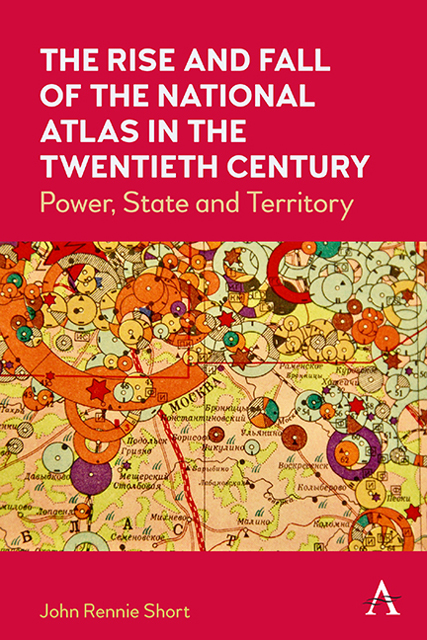Book contents
- Frontmatter
- Contents
- List of Figures
- List of Tables
- Acknowledgments
- 1 Introduction
- 2 The Early National Atlas
- 3 Cartographic Anxieties and the Emergence of the Modern National Atlas
- 4 Cartographic Ruptures and the National Atlas
- 5 National Atlas, Global Discourses
- 6 The Physical World of the National Atlas
- 7 The Social World of the National Atlas
- 8 The End of the National Atlas?
- Notes
- Appendix: National Atlas Bibliography
- Index
5 - National Atlas, Global Discourses
Published online by Cambridge University Press: 09 December 2022
- Frontmatter
- Contents
- List of Figures
- List of Tables
- Acknowledgments
- 1 Introduction
- 2 The Early National Atlas
- 3 Cartographic Anxieties and the Emergence of the Modern National Atlas
- 4 Cartographic Ruptures and the National Atlas
- 5 National Atlas, Global Discourses
- 6 The Physical World of the National Atlas
- 7 The Social World of the National Atlas
- 8 The End of the National Atlas?
- Notes
- Appendix: National Atlas Bibliography
- Index
Summary
The national atlas, as the name implies, is all about the nation-state: it represents the national territory and the national peoples, and it records, celebrates and sometimes idealizes the nation-state. Nationalist rhetoric drenches the nation-state. Yet this most nationalist of endeavors is also expressed in and through global discourses, making the most distinctly nationalist texts also one of the more universal. The global-national interaction in the national atlas is at the heart of this chapter. I will explore how the national atlas is a nexus between the national and the global. I will focus on three global discourses: international framing, language and cartographic conventions.
The Global Framing of the National
In the modern national atlas, usually one of the first maps depicted is a world map. This opening image invariably positions the nation-state in a global setting. The nation-state is depicted as unique but also as part of a wider world. The most distinctive global positioning was in the Bol’shĭ? sovetskiĭ? atlas mira (Great Soviet World Atlas) where the world is represented on a map projection shaped as a five-star outline state with the USSR highlighted in bright red (Figure 5.1). The whole world is recast in the form of the Soviet emblem with the USSR in prime location, suggestive of a world about to be dominated by the workings of history and forces of world communism into a USSR-shaped world.
In most cases, the initial world map is drawn to highlight the nation-state. Numerous atlases frame the world map from the position of their nation-state. In some cases, this involves novel perspectives. In the 1954 edition of the Atlas de la República Argentina, for example, the world is represented in the Mercator projection. However, it is centered on longitude 60 degree west, not the usual centering on 0 degree in Greenwich, England, which would have offset Argentina from the center of the map. So, a world map is used that frames Argentina at the center of the world with great subtlety. In the 1974 National Atlas of Canada several maps use polar projections, centered close to the North Pole rather than Mercator projection. Canada is at the center of the world from this perspective.
- Type
- Chapter
- Information
- The Rise and Fall of the National Atlas in the Twentieth CenturyPower, State and Territory, pp. 59 - 78Publisher: Anthem PressPrint publication year: 2022

